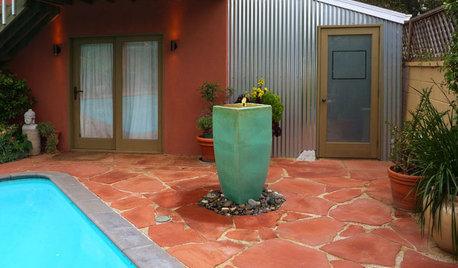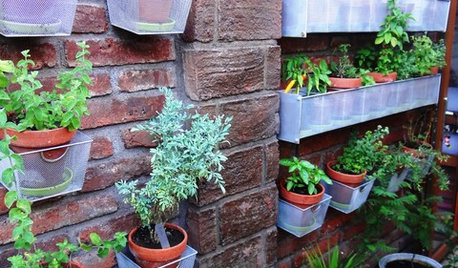sansho tips??? please
umeume
19 years ago
Related Stories

DECORATING GUIDES10 Bedroom Design Ideas to Please Him and Her
Blend colors and styles to create a harmonious sanctuary for two, using these examples and tips
Full Story
GARDENING GUIDESGreat Design Plant: Snowberry Pleases Year-Round
Bright spring foliage, pretty summer flowers, white berries in winter ... Symphoricarpos albus is a sight to behold in every season
Full Story
BEFORE AND AFTERSMore Room, Please: 5 Spectacularly Converted Garages
Design — and the desire for more space — turns humble garages into gracious living rooms
Full Story
HOME OFFICESQuiet, Please! How to Cut Noise Pollution at Home
Leaf blowers, trucks or noisy neighbors driving you berserk? These sound-reduction strategies can help you hush things up
Full Story
BATHROOM DESIGNUpload of the Day: A Mini Fridge in the Master Bathroom? Yes, Please!
Talk about convenience. Better yet, get it yourself after being inspired by this Texas bath
Full Story
SUMMER GARDENINGHouzz Call: Please Show Us Your Summer Garden!
Share pictures of your home and yard this summer — we’d love to feature them in an upcoming story
Full Story
HOUSEPLANTSMother-in-Law's Tongue: Surprisingly Easy to Please
This low-maintenance, high-impact houseplant fits in with any design and can clear the air, too
Full Story
GARDENING GUIDES9 Fresh Herbs for Crowd-Pleasing Thanksgiving Dishes
Pluck these herbs from a windowsill pot or a garden for a Thanksgiving meal that sings with fresh flavor
Full Story
Yes, Please: Parisian Hotel Flair
Bring on the Bling to Recreate the City of Romance at Home
Full StorySponsored







Ron_B
yama
Related Professionals
North New Hyde Park Landscape Architects & Landscape Designers · Saint Charles Landscape Architects & Landscape Designers · Willowick Landscape Architects & Landscape Designers · Maple Heights Landscape Architects & Landscape Designers · Broadlands Landscape Contractors · Cambridge Landscape Contractors · Cornelius Landscape Contractors · Medford Landscape Contractors · West Palm Beach Landscape Contractors · Bonney Lake Decks, Patios & Outdoor Enclosures · Liberty Decks, Patios & Outdoor Enclosures · Northglenn Decks, Patios & Outdoor Enclosures · Pittsburgh Decks, Patios & Outdoor Enclosures · Riverside Decks, Patios & Outdoor Enclosures · Westfield Decks, Patios & Outdoor EnclosuresumeumeOriginal Author
yama
SilverVista
umeumeOriginal Author
yama
edzard
SilverVista
yama
edzard
SilverVista
Ron_B
yama
silphion
DonPylant
ScottReil_GD
kathydan